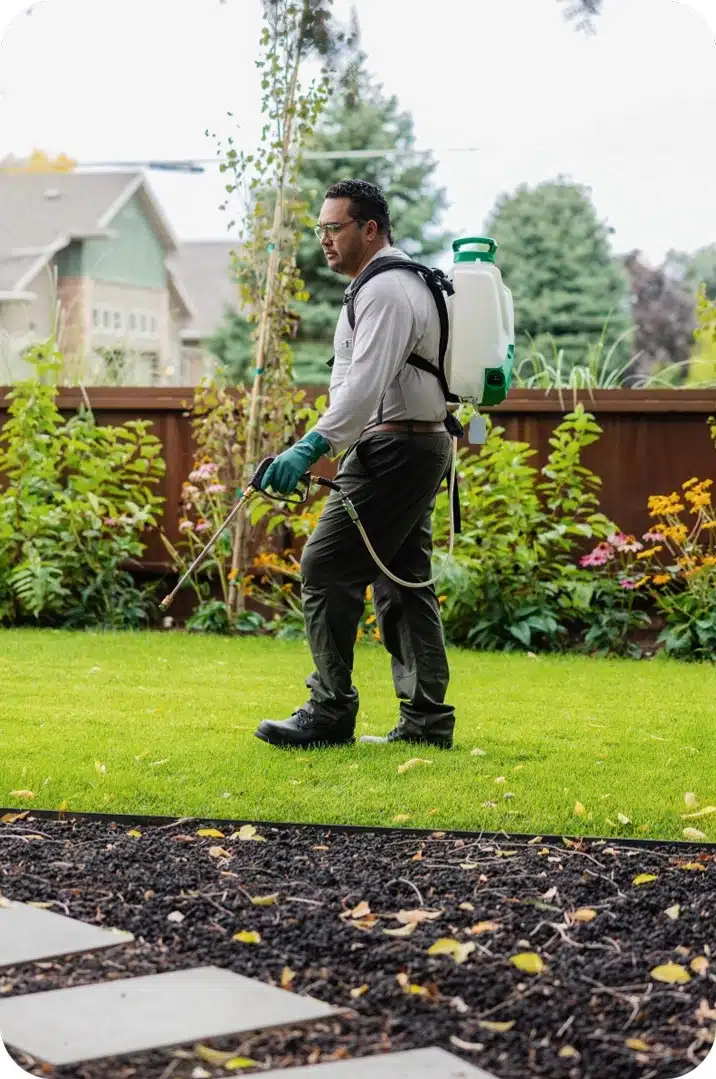Relied On A1 Exterminator Charlotte NC - Comprehensive Pest Solutions
Relied On A1 Exterminator Charlotte NC - Comprehensive Pest Solutions
Blog Article
Bed Bug Therapy Malfunction: Comparing Chemical Vs. Non-Chemical Solutions
In the world of insect control, specifically when handling the consistent issue of bed insects, the selection between chemical and non-chemical treatment options can be a pivotal one. Both techniques use distinctive benefits and disadvantages, affecting factors such as efficiency, security factors to consider, and overall expense. By examining the nuanced details of each method, a more clear understanding of which course to seek in dealing with a bed insect infestation can be obtained.
Performance of Chemical Therapies
Chemical therapies for bed bug invasions have actually been extensively acknowledged for their quick and powerful effectiveness in getting rid of these bugs. When thinking about the performance of chemical therapies, it is crucial to understand that they can offer a complete and fast solution to a bed bug trouble. Specialist pest control experts usually count on pesticides to target bed pests at different stages of their life cycle, including eggs, fairies, and adults. These chemicals normally work by interrupting the bed pests' nerve system, causing paralysis and eventual fatality.
Additionally, chemical treatments have the benefit of providing residual impacts, indicating that they can remain to remove bed insects also after the preliminary application. This recurring action is specifically useful in combating any kind of possible re-infestations. Additionally, the fast activity of chemical therapies can bring relief to people encountering serious bed insect problems, enabling them to gain back control of their living spaces rapidly.
Safety And Security Concerns With Chemical Solutions
One vital facet that needs mindful factor to consider when making use of chemical options for bed bug treatment is making certain the safety and security of owners and the environment. While chemical treatments can be efficient in getting rid of bed pests, they may position risks if not managed appropriately. One of the primary safety and security worry about chemical services is the potential injury they can create to human health. Exposure to specific chemicals utilized in bed insect therapies can lead to respiratory concerns, skin irritation, or other damaging responses, especially in people with pre-existing conditions or sensitivities. In addition, incorrect application or dosage of chemical pesticides can cause toxic deposits remaining in the treated location, posing lasting health threats to residents.
Furthermore, the environmental effect of chemical solutions is an additional considerable consideration. Some pesticides utilized in bed bug therapies might be damaging to advantageous pests, wildlife, and ecosystems if they leach right into the dirt or water systems. It is important to utilize chemical therapies deliberately, adhering to safety standards, and taking into consideration less harmful options to minimize these threats and make certain the secure and effective management of bed insect invasions.
Benefits of Non-Chemical Strategies
Thinking about the prospective security worries and ecological impact connected with chemical remedies for bed pest therapy, checking out non-chemical techniques presents an appealing alternative with several distinct benefits. Non-chemical methods provide a safer option for families, specifically those with family pets, individuals, or youngsters conscious harsh chemicals. These approaches remove the risks of exposure to harmful materials, lowering the capacity for unfavorable health and wellness impacts. Additionally, non-chemical treatments are environmentally pleasant, as they do not add to air or water contamination, making them a sustainable selection for bug control.
Furthermore, non-chemical solutions can be reliable in targeting bed pests, consisting of hard-to-reach areas where chemical therapies might not penetrate - A1 pest control services charlotte. Methods such as heat therapy, vacuuming, steam cleaning, and mattress encasements provide detailed elimination without the usage of unsafe chemicals.
Limitations of Non-Chemical Treatments

Furthermore, non-chemical therapies often need numerous applications to achieve successful elimination. This can be time-consuming and may not always ensure complete removal of all bed pests and their eggs, particularly in covert or hard-to-reach areas.
Furthermore, the success of non-chemical treatments heavily relies upon proper execution and thoroughness, which can be testing for people without specialist experience. Inadequate application of non-chemical methods may result in insufficient removal, causing relentless problems and the demand for added therapies.
As a result, while non-chemical treatments have their benefits, it is essential to acknowledge these limitations and consider them when determining the most reliable strategy for handling bed pest problems.
Expense Comparison: Chemical Vs. Non-Chemical Options
Provided the limitations related to non-chemical therapies, an essential aspect to examine in the context of bed insect administration is the price comparison between chemical and non-chemical alternatives. Chemical therapies normally entail the application of insecticides by professionals, which can vary from $250 to $900 per space, depending on the seriousness of the infestation and the dimension of the area to be dealt with. On the other hand, non-chemical treatments like heat therapy or heavy steam can be a lot more pricey, with costs ranging from $1,000 to $6,000 for a whole home. While the initial price of chemical therapies might appear lower, multiple therapies may be needed to fully eradicate the problem, potentially enhancing the overall price. On the other hand, non-chemical alternatives may give go now a more environment-friendly and sustainable solution, although they can be cost-prohibitive for some individuals. Inevitably, when taking into consideration the expense of bed pest treatment options, it is crucial to weigh the in advance expenditures against the effectiveness and lasting sustainability of the chosen approach.
Conclusion

Considering the prospective security concerns and ecological impact associated with chemical options for bed pest therapy, checking out non-chemical techniques offers a promising alternative with a number of distinctive advantages.Given the limitations connected with non-chemical treatments, an essential facet to review in the context of bed pest management is the cost comparison between chemical and non-chemical options. In comparison, non-chemical treatments like heat treatment or heavy steam can be extra costly, with prices varying from $1,000 to $6,000 for a whole home. While the initial cost of chemical treatments may seem lower, numerous therapies might be called for to totally eradicate the infestation, possibly raising the overall cost.In conclusion, when comparing chemical and non-chemical bed pest treatment choices, it is essential to consider effectiveness, safety, advantages, constraints, and price.
Report this page